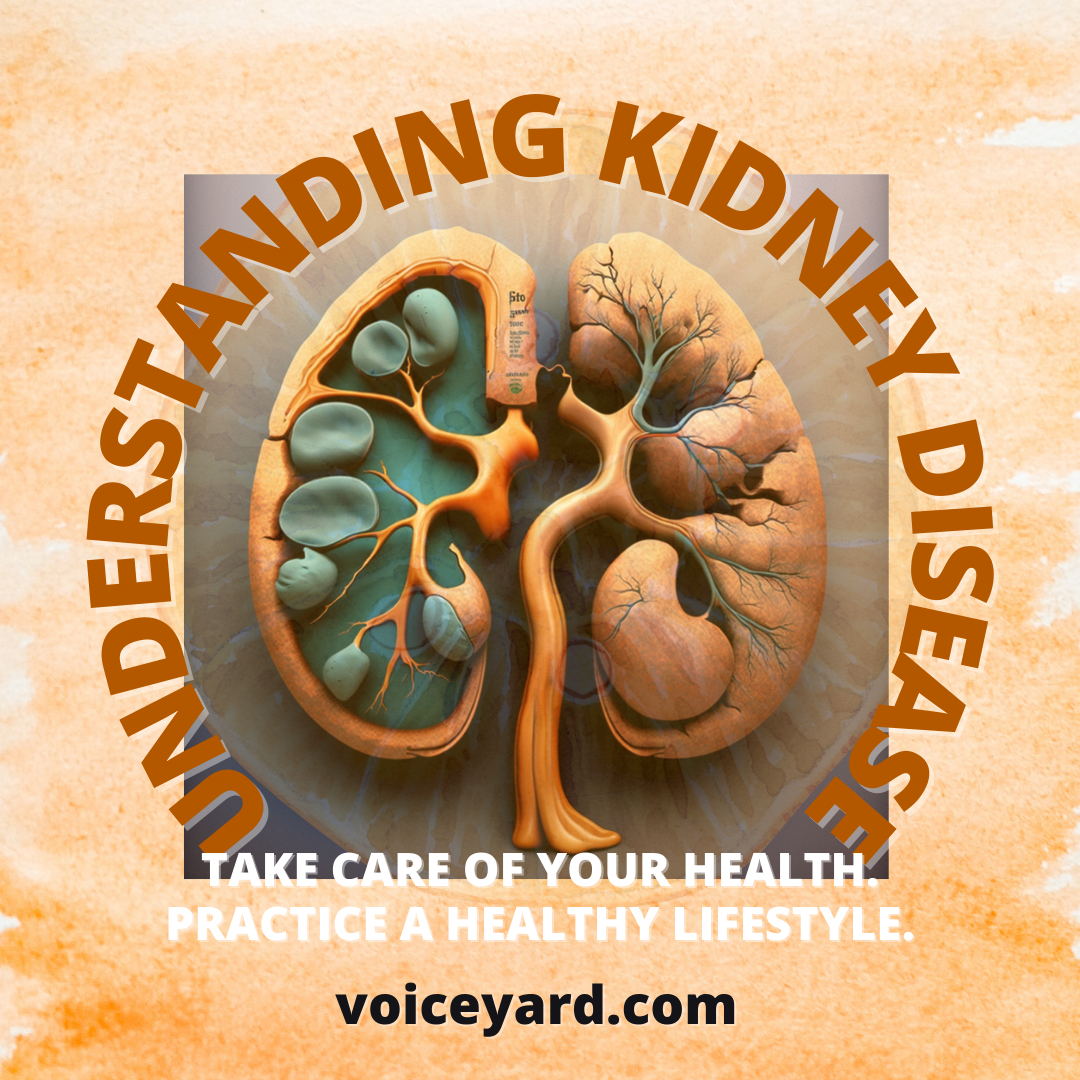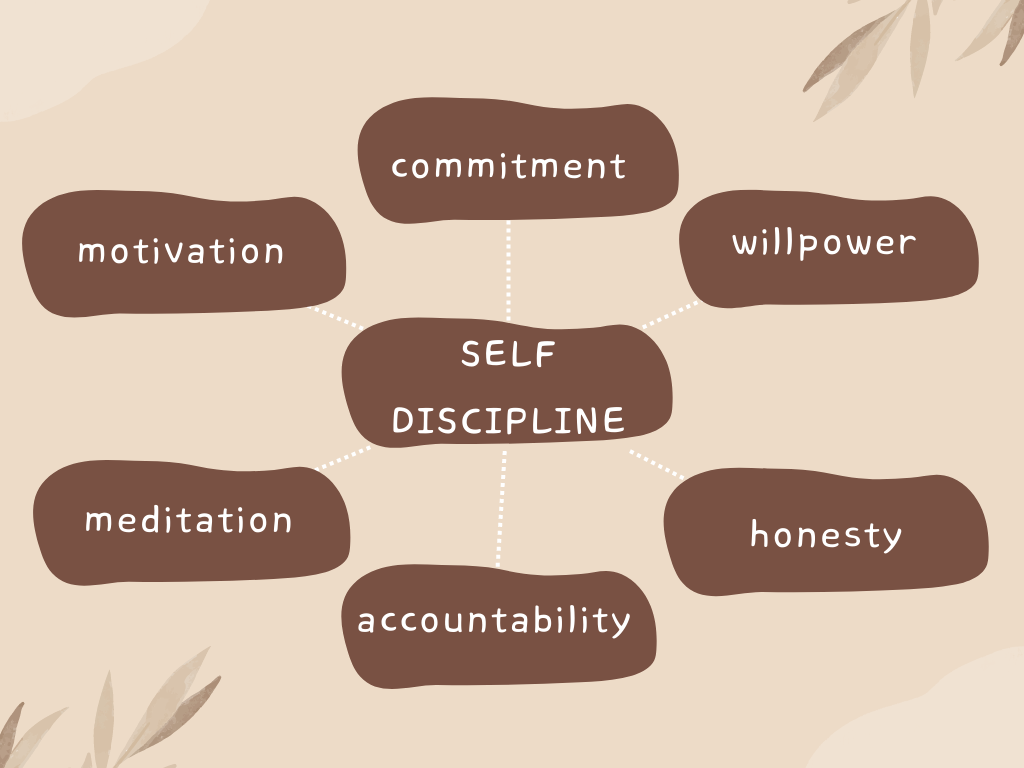Understanding Kidney Disease: A Comprehensive Guide to Prevention, Diagnosis, and Treatment
***freeDIGIBOOK***Managing Back Pain: Understanding Causes, Treatment Options, and Lifestyle Changes
Chapter 1: Introduction to Kidney Disease
What are the kidneys and what do they do?
What is kidney disease?
Causes and risk factors for kidney disease.
The kidneys are two bean-shaped organs located on either side of the spine, just below the rib cage. Their primary function is to filter waste products and excess fluid from the blood, which are then excreted as urine. In addition, the kidneys play a crucial role in maintaining the body’s electrolyte balance, regulating blood pressure, and producing hormones that stimulate the production of red blood cells.
Kidney disease, also known as renal disease, refers to any condition that affects the functioning of the kidneys.
There are many different types of kidney disease, ranging from mild to severe. In some cases, kidney disease can lead to kidney failure, which is a life-threatening condition that requires immediate medical intervention.
The most common causes of kidney disease include diabetes, high blood pressure, and certain genetic disorders. Other risk factors for kidney disease include obesity, smoking, a family history of kidney disease, and a history of kidney infections or kidney stones. Age and ethnicity can also play a role in the development of kidney disease, with older adults and individuals of African American, Hispanic, or Native American descent being at higher risk.
Chapter 2: Signs and Symptoms of Kidney Disease
Common signs and symptoms of kidney disease
How kidney disease is diagnosed
Stages of kidney disease
Kidney disease often develops gradually and may not cause noticeable symptoms until the later stages. However, some common signs and symptoms that may indicate kidney disease include:
Fatigue and weakness
Swelling in the legs, ankles, feet, or face
Shortness of breath
Trouble sleeping
Nausea and vomiting
Loss of appetite
Changes in urination, such as increased frequency or decreased output
Blood or protein in the urine
Itching and dry skin
Muscle cramps
If kidney disease is suspected, a doctor may perform a series of tests to confirm the diagnosis. These may include blood tests to measure kidney function and urine tests to check for the presence of protein or other abnormalities. In some cases, imaging tests such as an ultrasound or CT scan may be used to evaluate the kidneys.
Kidney disease is typically classified into five stages, based on the level of kidney function. Stage 1 and 2 represent mild kidney disease, while stages 3-5 are considered moderate to severe.
Treatment options may vary depending on the stage of kidney disease, with earlier stages typically managed through lifestyle changes and medication, while later stages may require more aggressive interventions such as dialysis or kidney transplantation.
Chapter 3: Types of Kidney Disease
Chronic kidney disease
Acute kidney injury
Polycystic kidney disease
Glomerulonephritis
Other types of kidney disease
There are several types of kidney disease, each with its own unique causes, symptoms, and treatment options. Some of the most common types of kidney disease include:
Chronic kidney disease (CKD): This is a long-term condition in which the kidneys gradually lose their ability to function properly. CKD can be caused by a variety of factors, including diabetes, high blood pressure, and autoimmune disorders.
Acute kidney injury (AKI): Also known as acute renal failure, AKI occurs when the kidneys suddenly stop working properly. This can be caused by a number of factors, including dehydration, infection, or exposure to toxins.
Polycystic kidney disease (PKD): This is an inherited condition in which cysts form in the kidneys, leading to kidney damage over time. PKD can also cause cysts to form in other organs, such as the liver and pancreas.
Glomerulonephritis: This is a type of kidney disease that affects the glomeruli, which are tiny structures in the kidneys that filter blood. Glomerulonephritis can be caused by a variety of factors, including infections, autoimmune disorders, and certain medications.
Other types of kidney disease: There are many other types of kidney disease, including nephrotic syndrome, interstitial nephritis, and kidney stones. These conditions can be caused by a variety of factors, including infections, autoimmune disorders, and genetic mutations.
Treatment options for kidney disease may vary depending on the underlying cause and the stage of the disease. In some cases, lifestyle changes such as diet and exercise may be enough to slow the progression of kidney disease, while in other cases more aggressive interventions such as medication, dialysis, or kidney transplantation may be necessary.
Chapter 4: Causes and Prevention of Kidney Disease
Diabetes and kidney disease
High blood pressure and kidney disease
Lifestyle factors and kidney disease
Preventing kidney disease
Kidney disease can be caused by a variety of factors, including certain medical conditions, lifestyle habits, and environmental factors. Some of the most common causes of kidney disease include:
Diabetes: High levels of blood sugar can damage the blood vessels in the kidneys, leading to kidney damage or failure over time.
High blood pressure: High blood pressure can damage the blood vessels in the kidneys, leading to kidney damage or failure over time.
Lifestyle factors: Certain lifestyle habits such as smoking, unhealthy eating habits, and lack of exercise can increase the risk of kidney disease.
Environmental factors: Exposure to certain toxins or pollutants can damage the kidneys and increase the risk of kidney disease.
Preventing kidney disease is an important step in maintaining overall health and wellness. Some tips for preventing kidney disease include:
Managing medical conditions: If you have diabetes or high blood pressure, it’s important to work with your healthcare provider to manage these conditions and keep them under control.
Maintaining a healthy lifestyle: Eating a healthy diet, getting regular exercise, and avoiding smoking can all help reduce the risk of kidney disease.
Monitoring kidney function: If you’re at increased risk for kidney disease, your healthcare provider may recommend regular kidney function tests to monitor your kidney function over time.
Avoiding exposure to toxins: Limiting exposure to toxins such as pesticides, heavy metals, and chemicals can help reduce the risk of kidney disease.
By taking steps to prevent kidney disease, individuals can reduce their risk of developing this serious and potentially life-threatening condition.
Chapter 5: Treatment Options for Kidney Disease
Medications for kidney disease
Dialysis
Kidney transplant
Lifestyle changes to manage kidney disease.
Treatment options for kidney disease may vary depending on the underlying cause and the stage of the disease. Some of the most common treatment options include:
Medications: Medications may be prescribed to help manage symptoms of kidney disease or to slow the progression of the disease. Some medications commonly used to treat kidney disease include blood pressure medications, diuretics, and erythropoietin (EPO) injections to stimulate red blood cell production.
Dialysis: Dialysis is a medical treatment that helps remove waste and excess fluid from the blood when the kidneys are no longer able to function properly.
There are two main types of dialysis:
hemodialysis, which involves using a machine to filter the blood outside the body, and peritoneal dialysis, which involves using the lining of the abdominal cavity to filter the blood.
Kidney transplant: In some cases, a kidney transplant may be necessary to replace a diseased or damaged kidney with a healthy one. Kidney transplants can be performed using a kidney from a living or deceased donor.
Lifestyle changes: Making certain lifestyle changes, such as eating a healthy diet, getting regular exercise, and quitting smoking, can help manage symptoms of kidney disease and reduce the risk of complications.
Understanding Kidney Disease, it’s important for individuals with kidney disease to work closely with their healthcare providers to determine the best treatment options for their individual needs. By managing kidney disease effectively, individuals can help maintain their overall health and quality of life.
Chapter 6: Managing Complications of Kidney Disease
Anemia
Bone disease
High blood pressure
Electrolyte imbalances
Other complications
Kidney disease can lead to a variety of complications, some of which may require medical intervention.
Some of the most common complications of kidney disease include:
Anemia: Kidney disease can cause a decrease in the production of red blood cells, leading to anemia. This can cause fatigue, weakness, and shortness of breath.
Bone disease: Kidney disease can lead to a buildup of calcium and phosphorus in the body, which can weaken bones and lead to bone disease.
High blood pressure: Kidney disease can cause high blood pressure, which can further damage the kidneys and increase the risk of heart disease and stroke.
Electrolyte imbalances: Kidney disease can cause imbalances in electrolytes such as sodium, potassium, and calcium, which can lead to muscle cramps, weakness, and other complications.
Other complications: Kidney disease can also lead to a variety of other complications, including nerve damage, skin disorders, and an increased risk of infections.
Managing these complications typically involves a combination of medication and lifestyle changes. For example, medications may be prescribed to help manage high blood pressure, anemia, or bone disease. Dietary changes may also be recommended to help manage electrolyte imbalances and other complications.
In some cases, dialysis or kidney transplantation may be necessary to manage severe or life-threatening complications of kidney disease.
Understanding Kidney Disease, it’s important for individuals with kidney disease to work closely with their healthcare providers to manage these complications and prevent further damage to the kidneys. By managing complications effectively, individuals can improve their overall health and quality of life.
Chapter 7: Diet and Nutrition for Kidney Disease
Importance of a healthy diet for kidney disease
Dietary restrictions for kidney disease
Recommended foods for kidney disease
A healthy diet is an important component of managing kidney disease. Eating the right foods can help reduce the workload on the kidneys and slow the progression of the disease.
Some key considerations for a kidney-friendly diet include:
Limiting sodium: Eating too much sodium can cause fluid retention and increase blood pressure, which can further damage the kidneys. Individuals with kidney disease are often advised to limit their sodium intake to less than 2,300 milligrams per day.
Controlling protein intake: Eating too much protein can increase the workload on the kidneys. Depending on the stage of kidney disease, individuals may be advised to limit their protein intake.
Restricting potassium and phosphorus: High levels of potassium and phosphorus in the blood can be dangerous for individuals with kidney disease. Depending on the stage of kidney disease, individuals may be advised to limit their intake of foods high in potassium and phosphorus.
Maintaining a healthy weight: Excess weight can increase the risk of kidney disease and further damage the kidneys. Maintaining a healthy weight through diet and exercise is an important component of managing kidney disease.
Some recommended foods for individuals with kidney disease include:
Fruits and vegetables (in moderation)
Lean protein sources such as chicken, fish, and tofu
Whole grains such as brown rice and quinoa
Low-fat dairy products such as milk, yogurt, and cheese
Healthy fats such as olive oil and avocados
It’s important for individuals with kidney disease to work with a registered dietitian or healthcare provider to develop a personalized meal plan that meets their individual needs and restrictions. By following a kidney-friendly diet, individuals can help manage their symptoms and slow the progression of the disease.
Chapter 8: Emotional and Social Impact of Kidney Disease
Coping with the diagnosis of kidney disease
Support for individuals with kidney disease
Relationships and kidney disease
Employment and kidney disease
Kidney disease can have a significant emotional and social impact on individuals and their families.
Some common issues that may arise include:
Coping with the diagnosis of kidney disease: Receiving a diagnosis of kidney disease can be overwhelming and may cause feelings of anxiety, fear, or depression. Coping strategies such as talking to a therapist or joining a support group can help individuals manage their emotions and adjust to the diagnosis.
Support for individuals with kidney disease: Support from family, friends, and healthcare providers can be critical in managing kidney disease. Individuals with kidney disease may benefit from a care team that includes a nephrologist, a registered dietitian, and a social worker.
Relationships and kidney disease: Kidney disease can affect relationships with family, friends, and romantic partners. Individuals with kidney disease may benefit from open communication with their loved ones about their condition and how it may impact their relationships.
Employment and kidney disease: Kidney disease can impact an individual’s ability to work, particularly if they require dialysis or other medical treatments. Individuals with kidney disease may benefit from working with their employer to find accommodations that allow them to continue working.
It’s important for individuals with kidney disease to prioritize their emotional and social well-being in addition to their physical health. Understanding Kidney Disease, by seeking support and finding ways to cope with the emotional and social impact of kidney disease, individuals can improve their overall quality of life.
Chapter 9: Research and Advances in Kidney Disease
Current research on kidney disease
Advances in treatment options
Future outlook for kidney disease
There is ongoing research into the causes, prevention, and treatment of kidney disease. Some areas of current research include:
Biomarkers: Researchers are investigating the use of biomarkers to help detect kidney disease earlier and monitor its progression over time.
Genetic testing: Researchers are studying the use of genetic testing to identify individuals at increased risk for kidney disease and to develop personalized treatment plans.
Stem cells: Researchers are exploring the use of stem cells to regenerate damaged kidney tissue and improve kidney function.
Immunotherapy: Researchers are investigating the use of immunotherapy to treat certain types of kidney disease, particularly those caused by autoimmune disorders.
Advances in treatment options for kidney disease are also being made. For example:
Artificial kidneys: Researchers are developing artificial kidneys that could potentially eliminate the need for dialysis or transplantation.
Wearable dialysis devices: Researchers are developing wearable dialysis devices that could allow individuals to receive treatment on the go, without having to visit a dialysis center.
Minimally invasive surgery: Advances in minimally invasive surgery techniques are making kidney transplantation and other surgical procedures safer and less invasive.
While there is still much to be learned about kidney disease, advances in research and treatment are providing hope for individuals with this condition. With continued research and innovation, it is possible that kidney disease could one day be preventable or curable.
Chapter 10: Living with Kidney Disease
Adjusting to life with kidney disease
Self-care tips for kidney disease
Staying positive and proactive with kidney disease
Conclusion: Understanding Kidney Disease and Moving Forward
Living with kidney disease can be challenging, but there are many strategies that individuals can use to manage their condition and maintain a good quality of life.
Some tips for living with kidney disease include:
Adjusting to life with kidney disease: It’s important to take the time to adjust to life with kidney disease and to make any necessary lifestyle changes. This may include adjusting your diet, managing your medications, and scheduling regular check-ups with your healthcare provider.
Self-care tips for kidney disease: Taking care of yourself is an important part of managing kidney disease. This may include getting regular exercise, getting enough sleep, and managing stress through relaxation techniques such as yoga or meditation.
Staying positive and proactive with kidney disease: A positive attitude and proactive approach to managing kidney disease can make a big difference in your overall health and well-being. It’s important to stay informed about your condition and to work closely with your healthcare provider to develop a personalized treatment plan.
In conclusion, understanding Kidney Disease is a complex and often challenging condition that requires ongoing management and care. By understanding the causes, symptoms, and treatment options for kidney disease, individuals can take an active role in managing their condition and maintaining their overall health and well-being.
With the right care and support, it is possible to live a full and fulfilling life with kidney disease.
Recap of key points in the book
Importance of early detection and treatment
Resources for individuals with kidney disease
Throughout this book, we have explored various aspects of kidney disease.
Here are some of the key points:
Kidney disease is a serious condition that can have significant health implications if left untreated.
Early detection and treatment of kidney disease are crucial for slowing the progression of the disease and reducing the risk of complications.
There are several types of kidney disease, each with its own unique causes, symptoms, and treatment options.
Treatment options for kidney disease may include medications, dialysis, kidney transplantation, and lifestyle changes.
Managing complications of kidney disease is an important component of overall care, and may involve medications, dietary changes, and other interventions.
A kidney-friendly diet is an important part of managing kidney disease, and may involve limiting sodium, protein, potassium, and phosphorus intake.
Emotional and social support is important for individuals with kidney disease and their families, and may involve working with a care team, seeking counseling, or joining a support group.
Understanding Kidney Disease, ongoing research into the causes, prevention, and treatment of kidney disease is providing hope for individuals with this condition.
Resources for individuals with kidney disease include healthcare providers, support groups, and advocacy organizations.
By understanding the key points of kidney disease and taking an active role in managing this condition, individuals with kidney disease can improve their overall health and well-being.





Thanks a bunch for sharing this with all of us you actually know what you are talking about! Bookmarked. Kindly also visit my website =). We could have a link exchange contract between us!